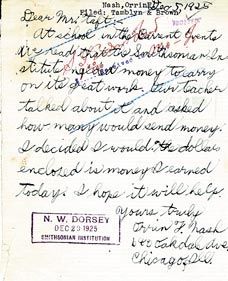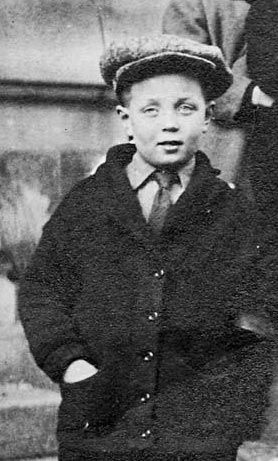Thinking Ahead
In 1925, 10-year-old Orrin Nash gave all he could to help the Smithsonian
/https://tf-cmsv2-smithsonianmag-media.s3.amazonaws.com/filer/Orrin-Nash-631.jpg)
A dollar was a lot of money for 10-year-old Orrin Nash. In 1925, when young Orrin mailed a contribution to the Smithsonian, he explained that he had read the Institution needed money and that "the dollar enclosed...I earned today." Smithsonian Secretary Charles Doolittle Walcott, in a letter thanking the boy, assured Orrin that "no one can tell what part your dollar may play in...ferreting out...some secret of nature."
In his 1826 will, James Smithson, the Institution's founding benefactor, mandated "an establishment for the increase & diffusion of Knowledge...." The 1846 act of Congress creating the Smithsonian provided specifics: a governing Board of Regents, a building, national collections, a library and publications. Congressman (and former President) John Quincy Adams served as chief planner and "indefatigable gadfly" during the Congressional debate over Smithson's bequest; Adams believed a Smithsonian Institution could make Washington a world center for scholarship, arts and sciences.
That goal has been achieved, thanks to visionary planning. In 1927, the Regents commissioned a report on the Smithsonian's future; it focused primarily on expanding research but also predicted a role as the leader "in the museum movement in America." The 1993 commission described the Smithsonian as a "cultural and scientific institution" that should strengthen its educational and technological initiatives as well as its collaborative partnerships to reach broader audiences worldwide.
Recently I initiated another major look into the Smithsonian's future. It is essential, given the transformative changes underway in technology, communication, demographics, economics and interdisciplinary approaches to global issues. We are using scenario-based planning to ensure flexibility. As futurist Peter Schwartz explains in The Art of the Long View, scenario-based planning helps "make strategic decisions that will be sound for all plausible futures." We expect that the new plan will be completed by September.
Over the past 15 years, federal funding has not kept up with all the costs of running the Smithsonian, and increasingly we need additional sources of income, including philanthropic donations. We must become more financially self-reliant, more innovative in reaching new audiences and more compelling in explaining why others should support us. The new plan will also help us increase our work on issues important to our country—education, climate change, species loss and diminishing biodiversity. It will help explain our relevance to Congress, the new president and our many supporters. Among them is Orrin Nash's daughter. She and the Smithsonian Archives have recently shared copies of the 1925 letters—wonderful pieces of our (and her) heritage.
G. Wayne Clough is Secretary of the Smithsonian Institution
/https://tf-cmsv2-smithsonianmag-media.s3.amazonaws.com/accounts/headshot/wayne-clough-240.png)


/https://tf-cmsv2-smithsonianmag-media.s3.amazonaws.com/accounts/headshot/wayne-clough-240.png)